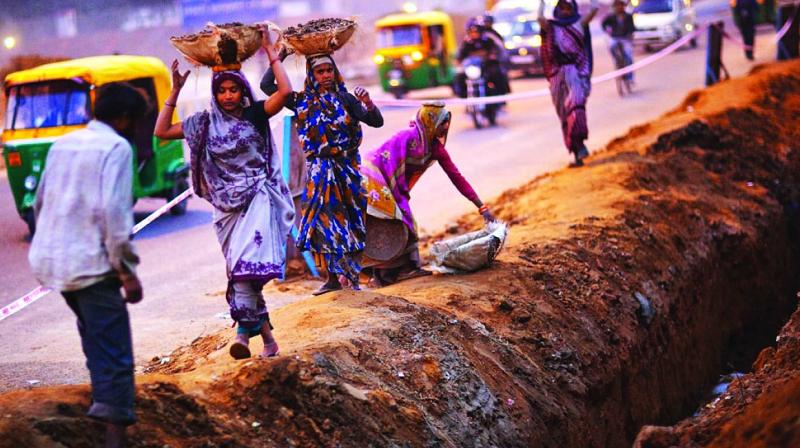Economy gives signals of weakening growth
GDP growth falls to 6.6%, core sector at 19-month low.

New Delhi: Indicating that India’s economy is in a slowdown mode, the country’s gross domestic product (GDP) growth fell to a five-quarter low of 6.6 per cent in the Oct.-Dec. quarter of 2018-19, with data points confirming pain in several sectors, especially the farm, mining and manufacturing sectors.
Numbers for the infrastructure sector also point to weakening economic activity. Eight core industries grew at the slowest pace in 19 months in January as the production of crude oil, refinery products and electricity contracted, according to official data released on Thursday.
By the current GDP data put out by the Central Statistics Office (CSO), India retained the tag of the fastest growing major economy, as China posted a GDP growth of 6.4 per cent in the quarter ended December 2018.
In a Reuters poll conducted during February 19-25, the median forecast from more than 55 economists was for a GDP growth of 6.9 per cent.
The economic growth for the previous quarter (July-September) was revised down to 7.0 per cent from 7.1 per cent, according to the official statement.
The growth rate in the third quarter of current financial year also marked a significant drop from 8.0 per cent in April-June 2018. “However, the growth in GDP during 2018-19 is estimated at 7.0 per cent as compared to the growth rate of 7.2 per cent in 2017-18,” the CSO said in its statement.
As far as the farm sector is concerned, real or inflation-adjusted gross value added (GVA) in agriculture grew 2.7 per cent in October-December, from 4.6 per cent in the same quarter of the previous year, and 4.2 per cent in July-September.
The concern, however, is that GVA in agriculture at current prices grew 2 per cent, sharply lower than the previous year’s 9.1 per cent in the same quarter, and also lower than 3.4 per cent in July-September 2018.
Showing up in food inflation, the current price crash is partly due to a bumper winter-sown crop that have flooded the mandis. With few buyers, the glut has forced farmers to dump products at throwaway prices to clear up a piling mount of vegetables.
Similarly, wholesale vegetable prices have been persistently falling over the last several months. Vegetable inflation was (-) 4.21 percent in January, growing only slightly than December’s (-) 17.55 per cent.
High inflation badly impacts people’s buying sentiments, while low levels can indicate poor demand and weak economic activity. Currently, it is the latter that seems to be playing out in the rural economy. However, the latest GDP data shows that market prices are lower than inflation-adjusted prices. Market prices at wholesale mandis seem to be clearly ruling at significantly lower levels than the minimum support prices.
Similarly, mining and quarrying growth for the full fiscal has been estimated at 1.2 per cent as against 5.1 per cent in 2017-18. However, it estimated that manufacturing growth would be higher at 8.1 per cent compared to 5.9 per cent in the previous financial year.
Meanwhile, the per capita income in real terms (at 2011-12 prices) during 2018-19 is likely to grow to Rs 92,718 as compared to Rs 87,623 for 2017-18. The growth rate in per capita income is estimated at 5.8 per cent in 2018-19, as against 5.7 per cent in the previous year.
The core sector mirrors the growth path of Indian economy.
But the core growth remained at the slowest pace in 19 months in January as the production of crude oil, refinery products and electricity contracted.
The sluggish infrastructure sector growth would impact the index of industrial production as these segments account for about 41 per cent of the total factory output.

